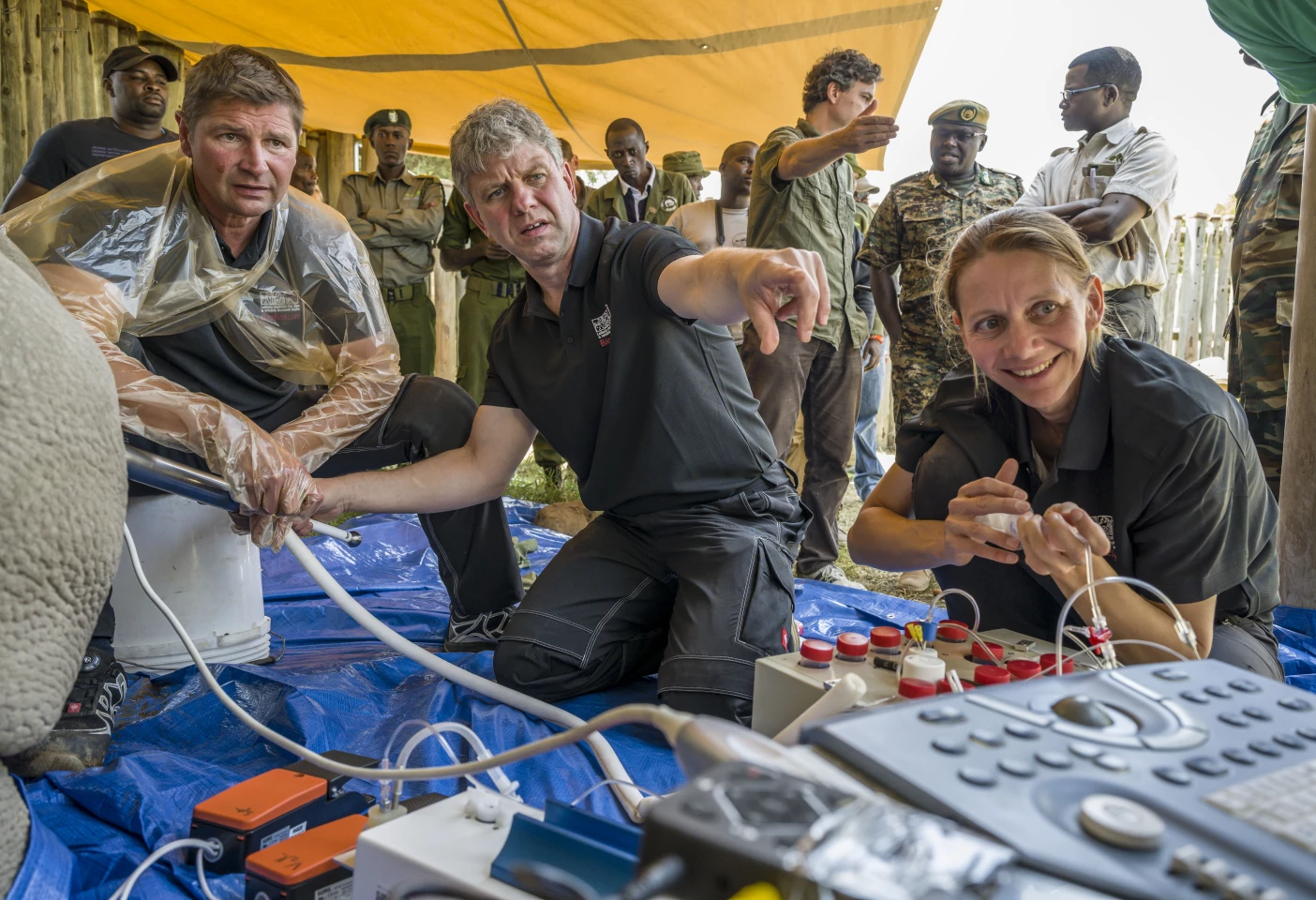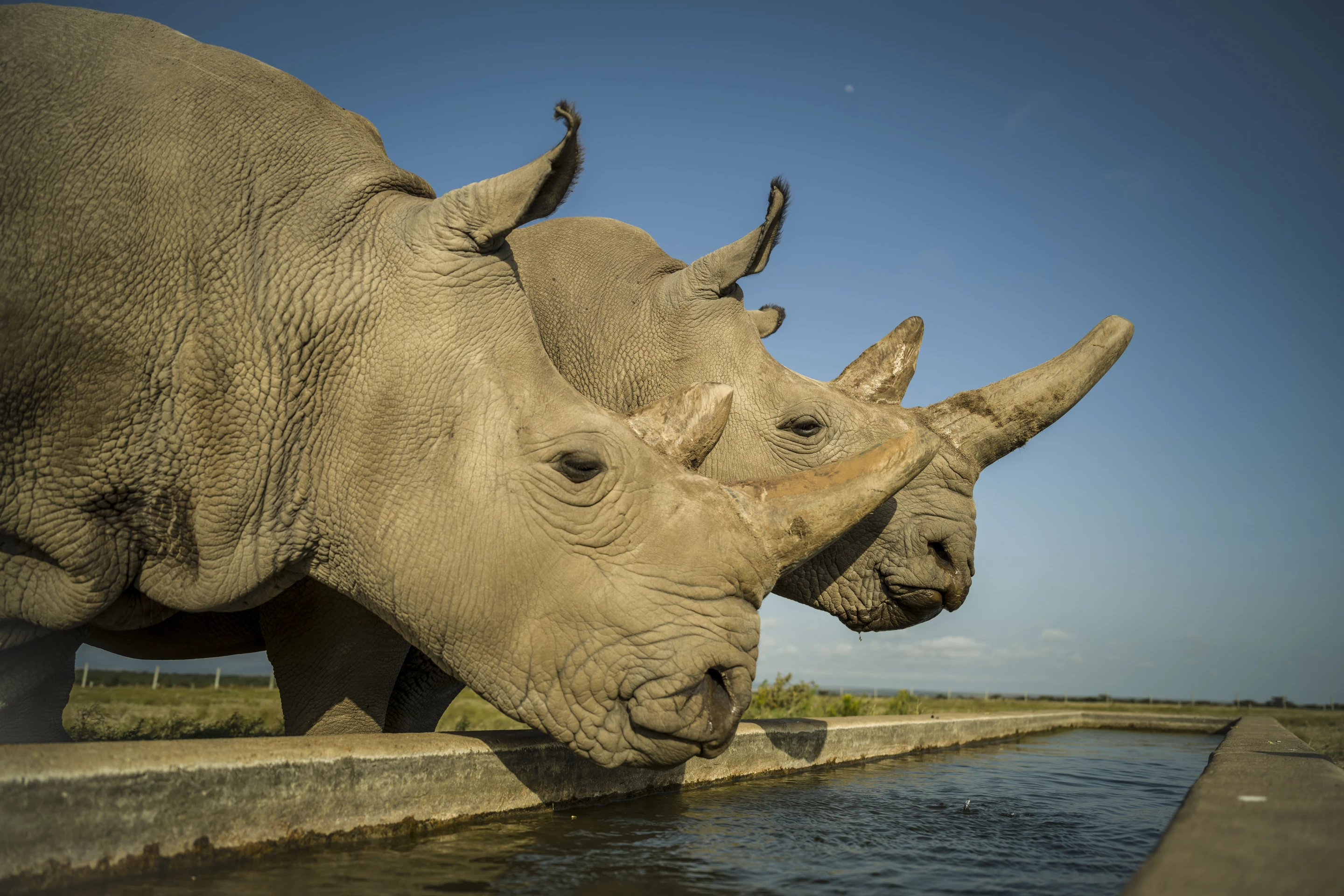There are only two northern white rhinoceroses left in the world, both of which are female and unable to carry a pregnancy. While this situation might seem to guarantee an end to the species, scientists are determined to keep that from happening, via eggs that have recently been harvested for artificial insemination.
The two rhinos, named Najin and Fatu, live at the Ol Pejeta Conservancy in Kenya.
In a 2009 breeding effort, they were introduced to two since-deceased male northern white rhinos that had been brought in from their captive home in the Czech Republic. Although mating was observed, no pregnancies resulted, leading researchers to believe that both females were infertile.
Following up on research performed last year as part of the international BioRescue project, immature egg cells (oocytes) have now been extracted from the ovaries of Najin and Fatu, while the animals were placed under general anaesthetic. The procedure was carried out by a team of veterinarians this Thursday, and involved using an ultrasound-guided probe to extract five oocytes from each rhino.

Plans call for each of those 10 egg cells to be inseminated using cryogenically-preserved sperm, that were extracted from the two males while they were still alive. If everything works out, a resulting embryo will then be placed in the uterus of a surrogate mother southern white rhino, who will proceed to give birth to a northern white rhino calf.
"Yesterday’s operation means that producing a northern white rhino embryo in vitro – which has never been done before – is a tangible reality for the first time," says Prof. Cesare Galli, co-founder of Avantea, the Italian lab which will perform the egg-fertilization. Other BioRescue members involved in Thursday's procedure include the earlier-mentioned Ol Pejeta Conservancy, Germany's Leibniz Institute for Zoo and Wildlife Research, the Czech Republic's Dvůr Králové Zoo, and the Kenya Wildlife Service.
Down the road, it is hoped that further research will allow scientists to transform preserved northern white rhino tissue into pluripotent stem cells, which could then be transformed into oocytes and sperm cells – thus providing the ingredients needed for test-tube-baby rhinos.
Source: Ol Pejeta Conservancy






